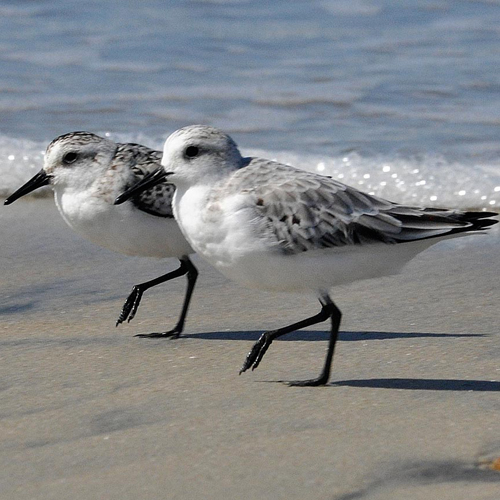General Description
The Sanderling is a small, light-colored sandpiper with a straight, black bill and black legs. The male and female look similar. In breeding plumage, it has a rufous head and neck and a rufous wash that extends onto its back. In non-breeding plumage, the adult is white underneath and very pale gray above while the juveniles are white underneath with a dark and light mottled top. Late-molters, Sanderlings don't reach their breeding plumage until late May. This is the only sandpiper that lacks a hind toe, which allows it to be a strong runner.
Sanderlings are Common in Western Washington from September-April.Habitat
Sanderlings breed farther north than any of the shorebirds found in Washington, nesting in dry, rocky tundra on the land closest to the North Pole. In winter and during migration, they inhabit broad, coastal beaches with light-colored sand. They can also be found on gravelly and rocky beaches and mudflats, and on top of kelp beds. In the fall, adults dominate the optimal habitats, and juveniles take the remaining spots.
Behavior
Sanderlings flock, and members of different flocks interchange freely. The quintessential surf-dodger, the Sanderling is most recognized for its behavior of running down to the water's edge with an outgoing wave, and racing back up the beach to avoid the next incoming wave. Dunlins and Western Sandpipers also do this, so this behavior is not diagnostic. They feed by probing, and leave bands of holes along a beach where they have stuck their beaks into the sand probing for food. They also feed in tire tracks. When roosting, they usually stand on one leg, and if disturbed, they will hop away from the disturbance on one leg.

No comments:
Post a Comment